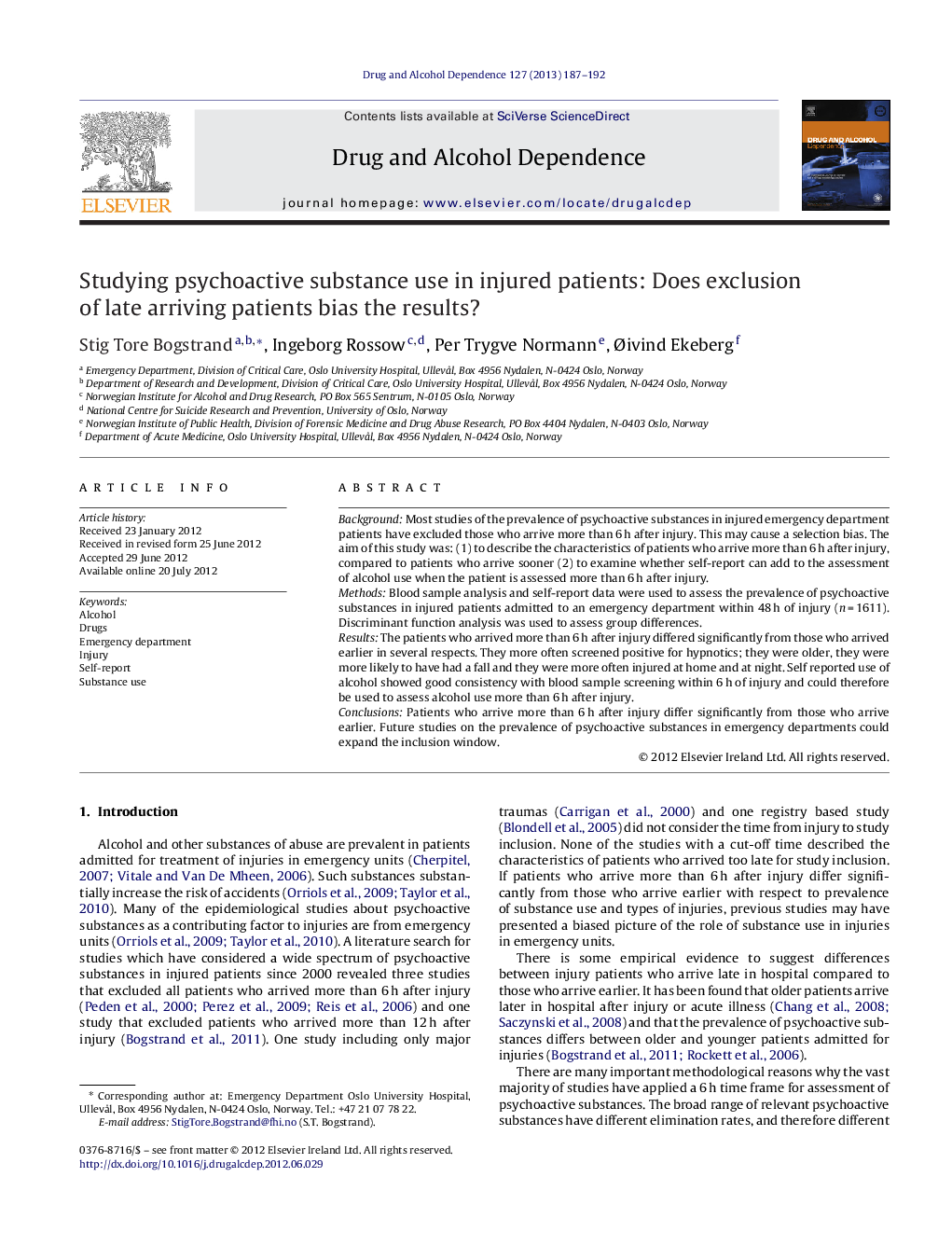| Article ID | Journal | Published Year | Pages | File Type |
|---|---|---|---|---|
| 1070013 | Drug and Alcohol Dependence | 2013 | 6 Pages |
BackgroundMost studies of the prevalence of psychoactive substances in injured emergency department patients have excluded those who arrive more than 6 h after injury. This may cause a selection bias. The aim of this study was: (1) to describe the characteristics of patients who arrive more than 6 h after injury, compared to patients who arrive sooner (2) to examine whether self-report can add to the assessment of alcohol use when the patient is assessed more than 6 h after injury.MethodsBlood sample analysis and self-report data were used to assess the prevalence of psychoactive substances in injured patients admitted to an emergency department within 48 h of injury (n = 1611). Discriminant function analysis was used to assess group differences.ResultsThe patients who arrived more than 6 h after injury differed significantly from those who arrived earlier in several respects. They more often screened positive for hypnotics; they were older, they were more likely to have had a fall and they were more often injured at home and at night. Self reported use of alcohol showed good consistency with blood sample screening within 6 h of injury and could therefore be used to assess alcohol use more than 6 h after injury.ConclusionsPatients who arrive more than 6 h after injury differ significantly from those who arrive earlier. Future studies on the prevalence of psychoactive substances in emergency departments could expand the inclusion window.
